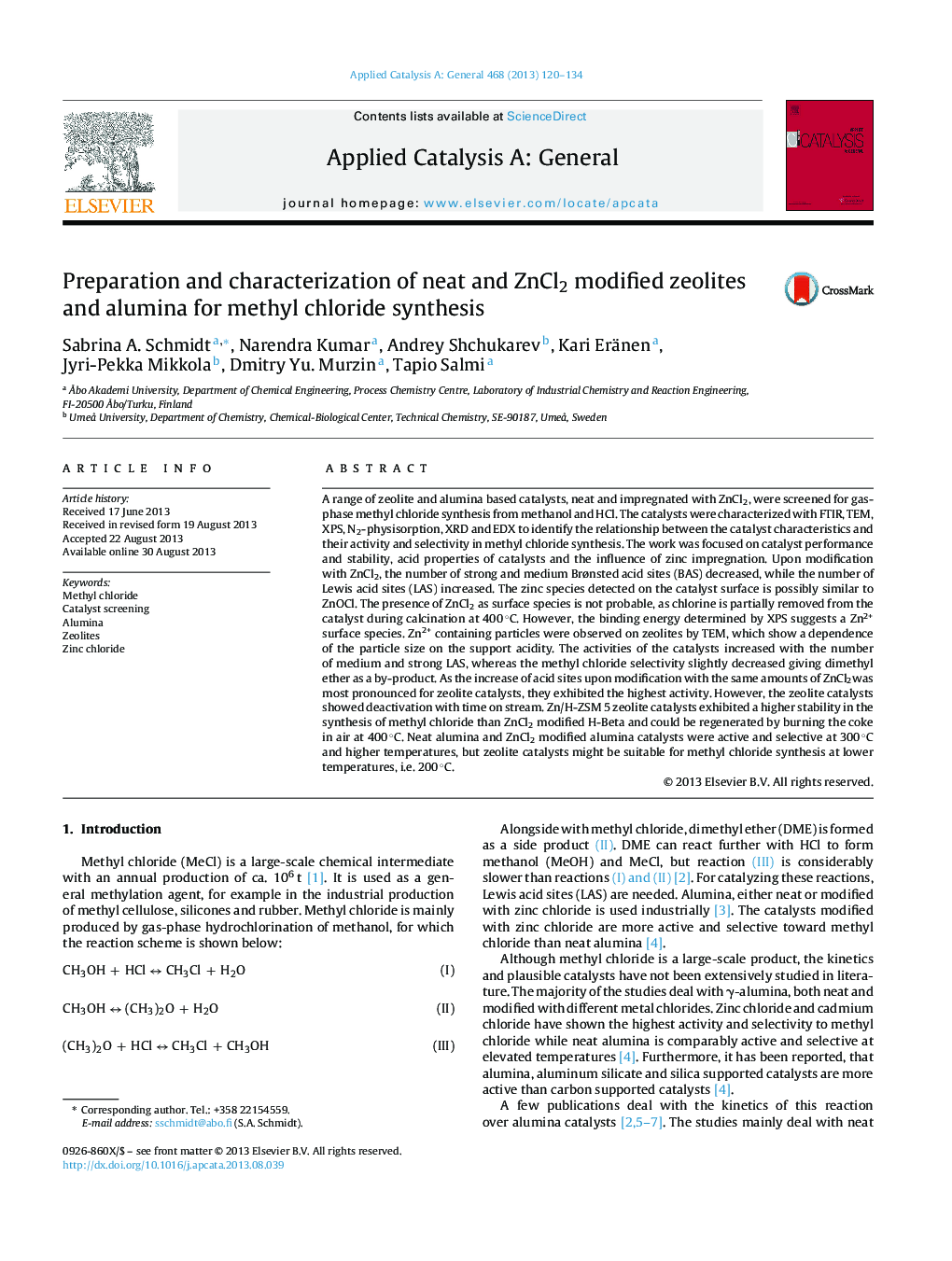| کد مقاله | کد نشریه | سال انتشار | مقاله انگلیسی | نسخه تمام متن |
|---|---|---|---|---|
| 40244 | 45848 | 2013 | 15 صفحه PDF | دانلود رایگان |

• Activity, selectivity and stability have been tested for all catalysts.
• Influence of zinc modification on surface area and pore volume was investigated.
• Activity and selectivity have been correlated with the catalysts acid properties.
• Zinc species on the catalyst surface have been characterized by EDX, TEM and XPS.
• Spent catalysts were characterized by N2-physisorption, FTIR, EDX and XRD.
A range of zeolite and alumina based catalysts, neat and impregnated with ZnCl2, were screened for gas-phase methyl chloride synthesis from methanol and HCl. The catalysts were characterized with FTIR, TEM, XPS, N2-physisorption, XRD and EDX to identify the relationship between the catalyst characteristics and their activity and selectivity in methyl chloride synthesis. The work was focused on catalyst performance and stability, acid properties of catalysts and the influence of zinc impregnation. Upon modification with ZnCl2, the number of strong and medium Brønsted acid sites (BAS) decreased, while the number of Lewis acid sites (LAS) increased. The zinc species detected on the catalyst surface is possibly similar to ZnOCl. The presence of ZnCl2 as surface species is not probable, as chlorine is partially removed from the catalyst during calcination at 400 °C. However, the binding energy determined by XPS suggests a Zn2+ surface species. Zn2+ containing particles were observed on zeolites by TEM, which show a dependence of the particle size on the support acidity. The activities of the catalysts increased with the number of medium and strong LAS, whereas the methyl chloride selectivity slightly decreased giving dimethyl ether as a by-product. As the increase of acid sites upon modification with the same amounts of ZnCl2was most pronounced for zeolite catalysts, they exhibited the highest activity. However, the zeolite catalysts showed deactivation with time on stream. Zn/H-ZSM 5 zeolite catalysts exhibited a higher stability in the synthesis of methyl chloride than ZnCl2 modified H-Beta and could be regenerated by burning the coke in air at 400 °C. Neat alumina and ZnCl2 modified alumina catalysts were active and selective at 300 °C and higher temperatures, but zeolite catalysts might be suitable for methyl chloride synthesis at lower temperatures, i.e. 200 °C.
Figure optionsDownload high-quality image (124 K)Download as PowerPoint slide
Journal: Applied Catalysis A: General - Volume 468, 5 November 2013, Pages 120–134